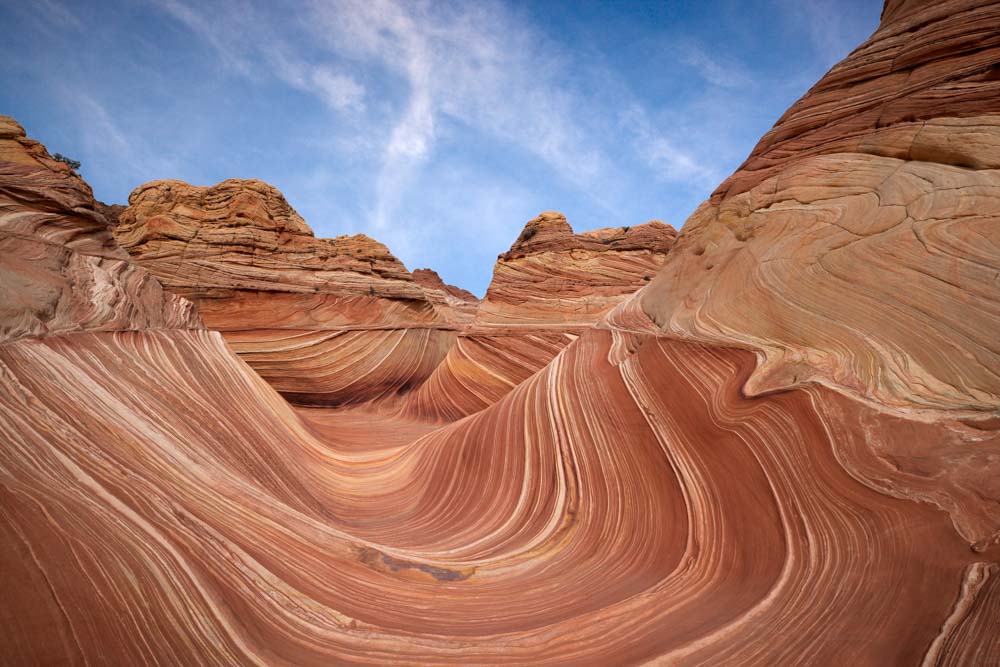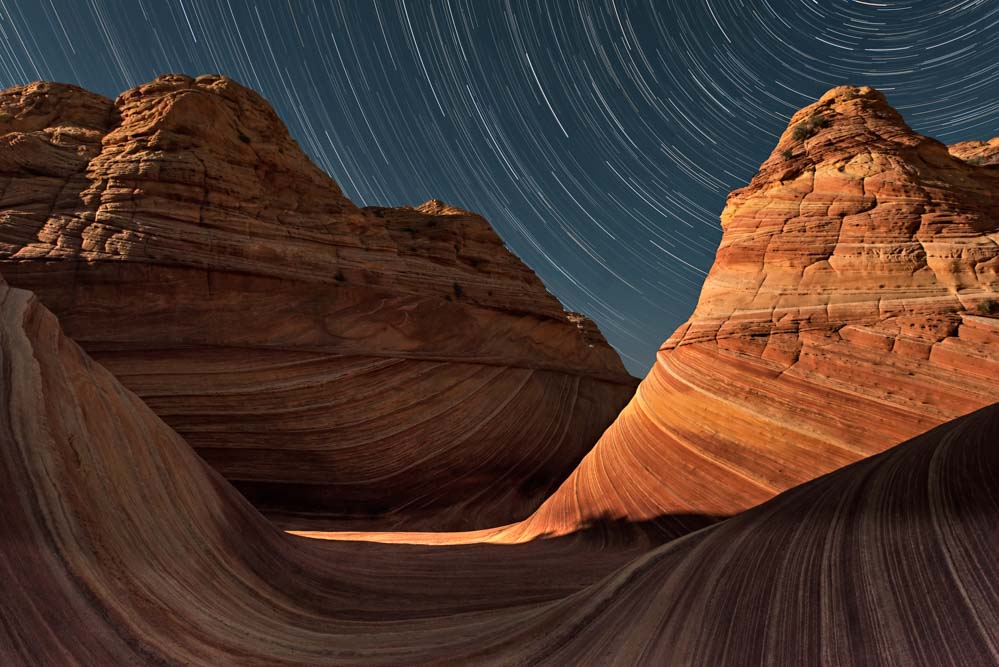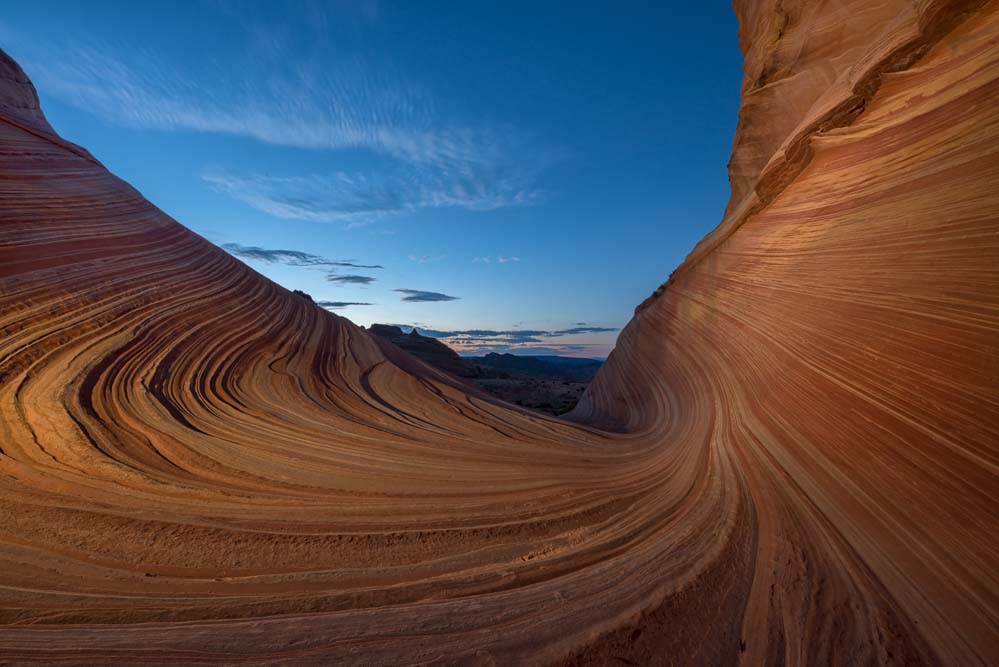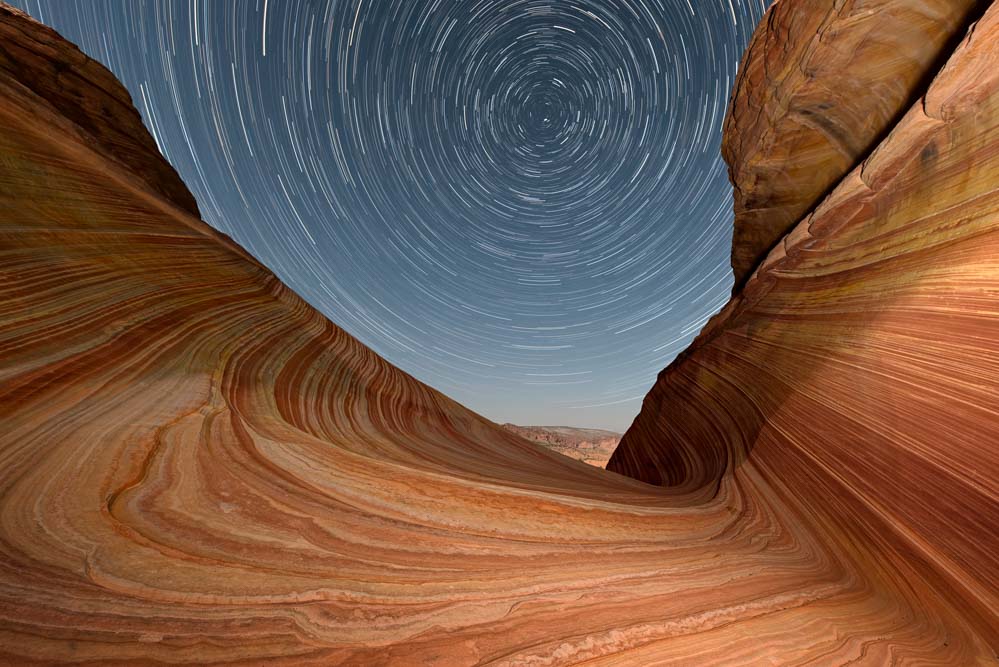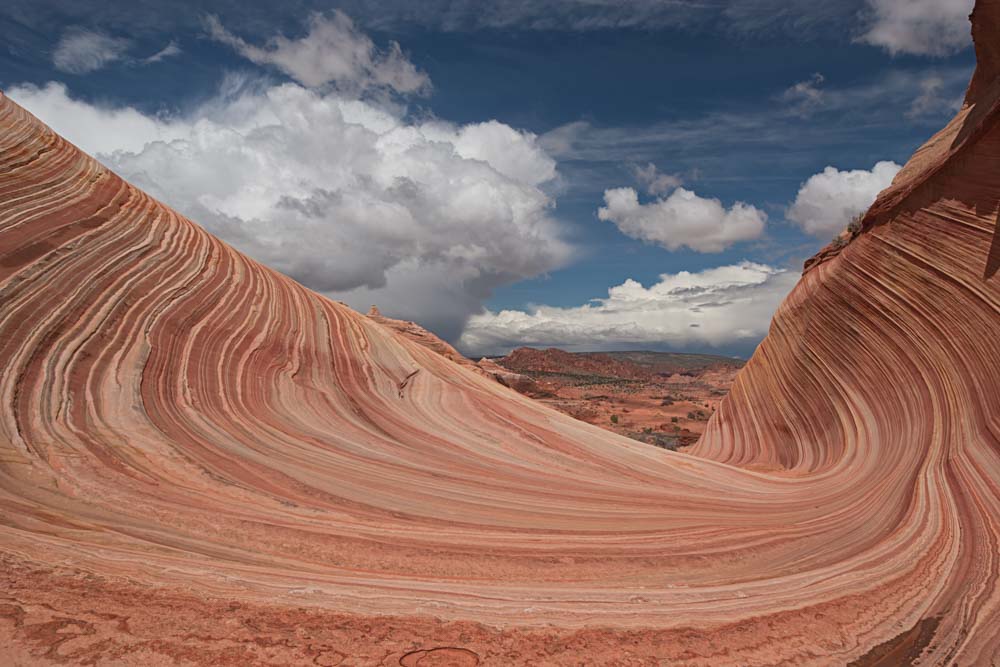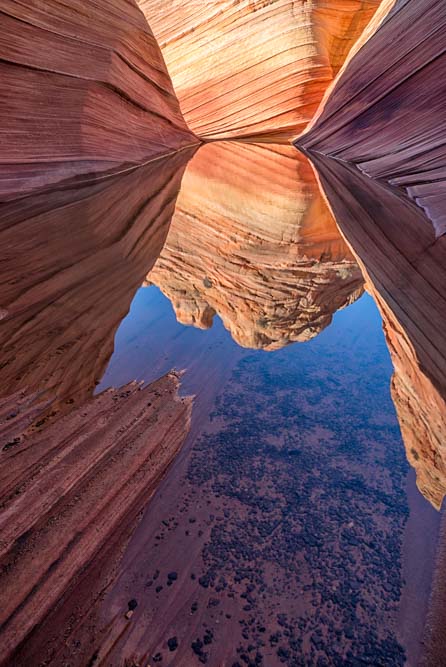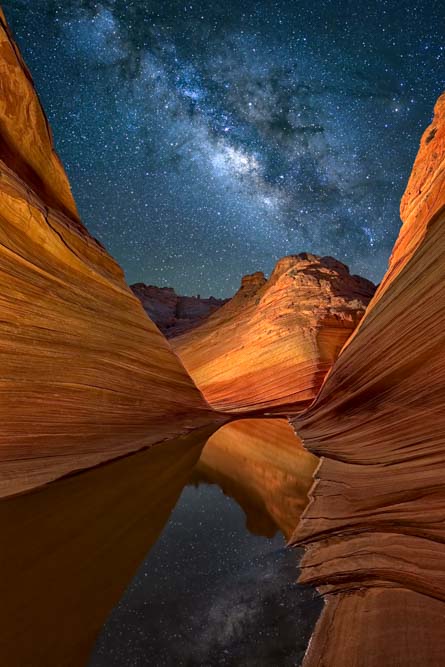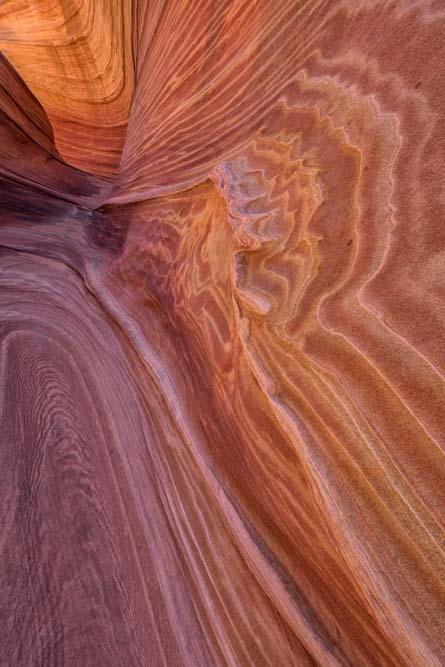Photographing The Wave
About half of all visitors to Coyote Buttes North only explore a little beyond The Wave. This is especially true in the summer and winter when extreme temperatures, lightning, or snow cover tend to keep visits short. Given this, I've added some thoughts on photographing The Wave itself. A gallery showing what I believe to be the classic images of The Wave is here.
The Wave opens up in three directions: to the north (the direction you came in on), to the east, and to the southwest. Each of these openings has a good photo associated with it. Below is a map showing the topography of The Wave.
I suggest you shoot from all three directions on your trip to The Wave. All can be shot in the morning in good light. In addition to these images, there are many other possibilities; see the main Wave gallery for some ideas.
Facing West
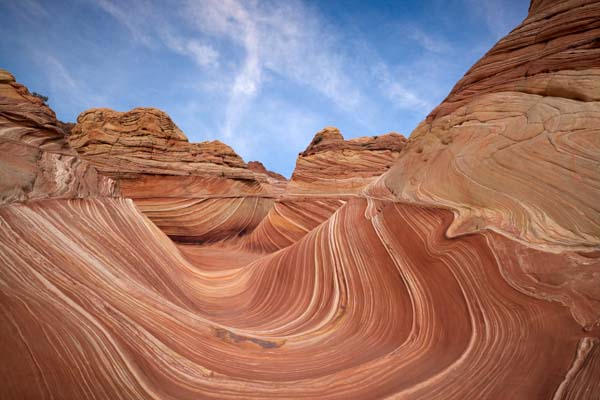
This image is best mid-morning. By late morning, the wall on the left (the south wall) starts to go into shadow, especially in the winter. You'll need a wide or ultra-wide for best results. I shot the image shown at 14mm. The "Eye of The Wave" is shown on the right; it is a great example of soft-sediment deformation.

You can also get great photos of the west night. I shot this image at 24mm. The moon shining through the slot lit the center of The Wave and its north wall.
Facing South
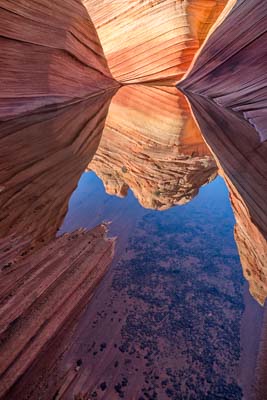
This image is best about an hour after sunrise when the south wall is lit and the side walls are in shadow. A few hours later, the side walls are partially lit, and the image suffers. Water is often found at the entrance to The Wave, especially in summer. Only a little water is needed to get a good photo; even one inch will do. Shoot close to ground level to emphasize the little rocks in the water, with a wide angle to normal lens. Both vertical and horizontal compositions work.
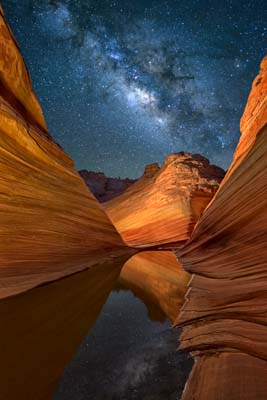
This is my favorite image of The Wave. It is best from May through August when the center of the Milky Way is in the southern sky. An LED panel lit the south wall, and the other two walls were light-painted with a warm-temperature flashlight.
Facing North
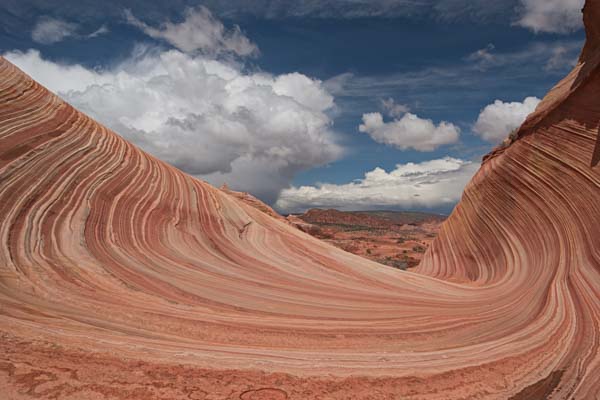
This image shows the entrance to The Wave. It is best mid-day and in the afternoon when clouds are present.
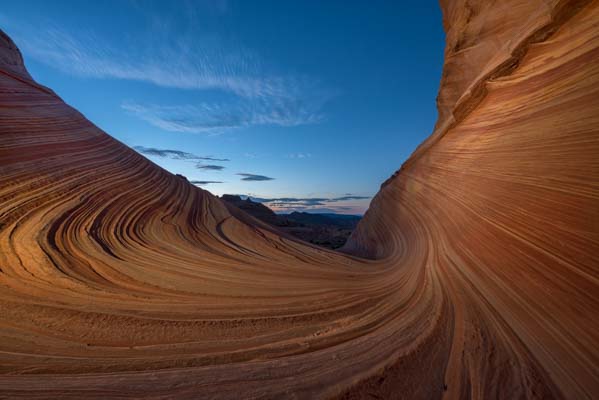
This image was shot at dusk. I used a warm-temperature LED panel to light the walls. The image was shot at 14mm.
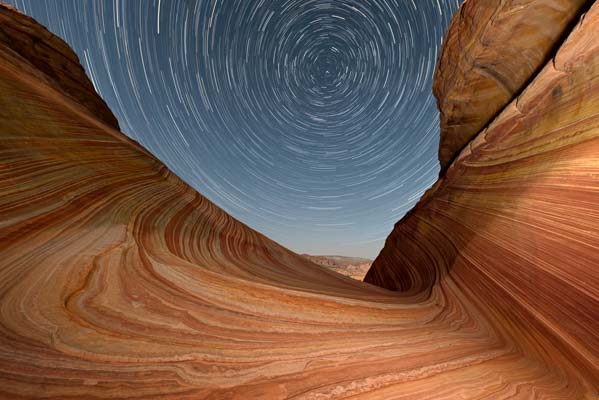
The entrance to The Wave faces north, providing a good foreground for star trails. The image was shot at 17mm, and the moon lighted the foreground. Night photography is a great alternative to shooting during the day in late spring and summer. The Milky Way is peak, nights are not too cold, and you can beat the day's heat. Camping is prohibited in Coyote Buttes North; no tents or sleeping bags are allowed. Bring warm clothing; in the early morning hours, it gets cold.
The Wave Slot Canyon
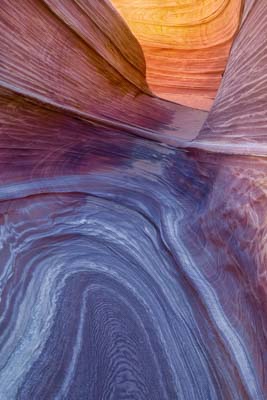
The last image is of a short slot canyon, which gets excellent reflected light in the late morning. Watch your depth of field when shooting this. Before shooting, you may want to smooth out the sand in the slot using a cloth, jacket, or rain jacket. It is difficult to remove the footprints in this sand using Photoshop.
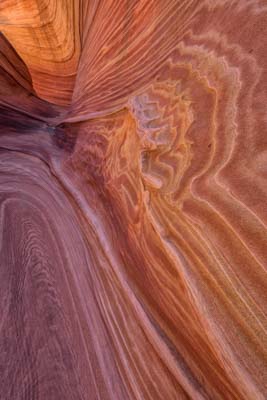
This image of the slot canyon wall shows a superb example of soft sediment deformation. This occurs during the early stages of sediment consolidation when the sediment is unsolidified or liquid-like.
